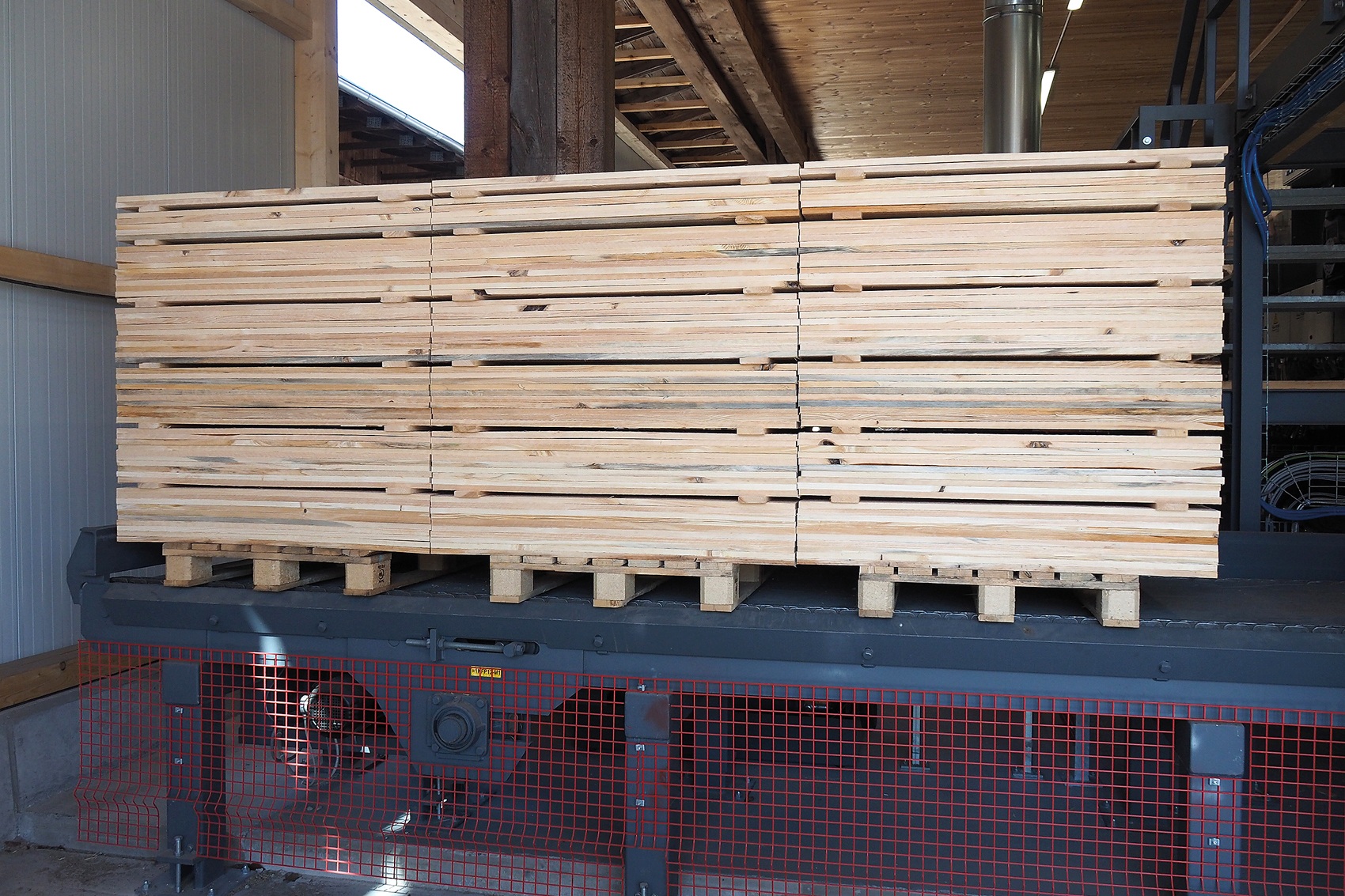Jürgen Martlmüller, the Managing Director, had several incentives for investing in a new restacking line, as well as his decision to opt for Kallfass as the supplier.
Weiss Holzwerk GmbH, a company with roots in the Bavarian town of Julbach in Germany, dates back to the 12th century. It produces a wide range of standard and custom pallets, as well as all types of wooden packaging. The raw material for this comes from the company's sawmill. “We cut around 36,000 solid cubic meters of soft wood every year. The majority of production is used for our own further processing whereas the superior quality is sold to carpenters, joiners, timber construction companies, and individuals”, according to Jürgen Martlmüller, the Managing Director. He attaches particular importance to regional marketing and the comprehensive use of wood. For example, they also take back old pallets and repair them. “Only when a repair is no longer possible are the pallets dismantled, components reused if possible. Then the leftovers are shredded and the shredded material is thermally recycled in the company's biomass heating plant in a CO2-neutral way”, Martlmüller emphasises. The machines and equipment receive the same level of care: these are carefully maintained and, if necessary, repaired, upgraded and overhauled by our staff, so that you can get the most out of the equipment's useful life.
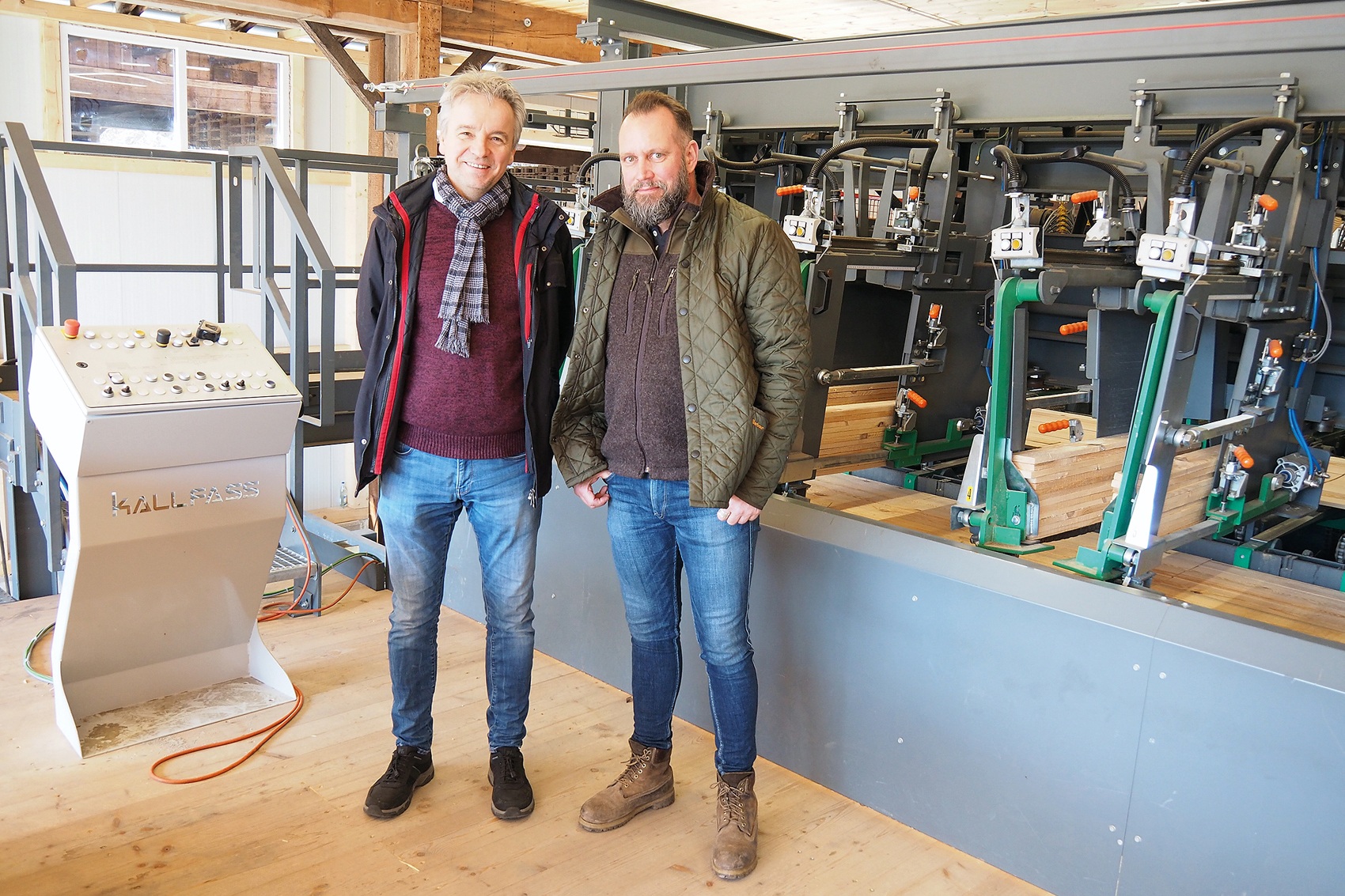
In front of the stacker: Managing Director Jürgen Martlmüller at Weiss Holzwerk GmbH and Matthias Link, Sales Manager at Kallfass (from left).
Multiple reasons - for investment and equipment supplier
However, this was no longer possible with the previous restacking line: “These systems had definitely reached the end of their service life”, says Martlmüller, thus stating the first reason why he decided to make the investment. To guarantee our pallet customers a 24 hour delivery window, we are equipped with a backup system for nearly every line—from a standby gen set to a second pallet line. As we have discontinued the use of our old cross-cut saw, we have had to introduce a new system that accurately stacks and cross-cuts the sawn goods for our pallet production”, is the second rationale. Thirdly: The stacking feature allows the wood packages produced in the new system to be directly loaded into the drying chamber. This was not a viable option in the past.
Thus, Martlmüller made a decision in favour of a restacking unit from the Kallfass location in Baiersbronn-Klosterreichenbach, Germany. “After reviewing multiple suppliers, Kallfass’ system excelled in many ways”, says the Managing Director. The system manufacturer provided the best concept in terms of technology, economy, and price. Additionally, Kallfass is renowned in the industry for its excellent designs and its robust products. The initial commissioning of the new restacking system took place in March 2022. This past January, the Kallfass increased the size of their systems with the addition of a buffer chain conveyor and a step feeder. “After the first few months it became apparent that feeding bundles is the rule rather than the exception. For this reason, we have again upgraded these systems”, explains Matthias Link, responsible Sales Manager at Kallfass.
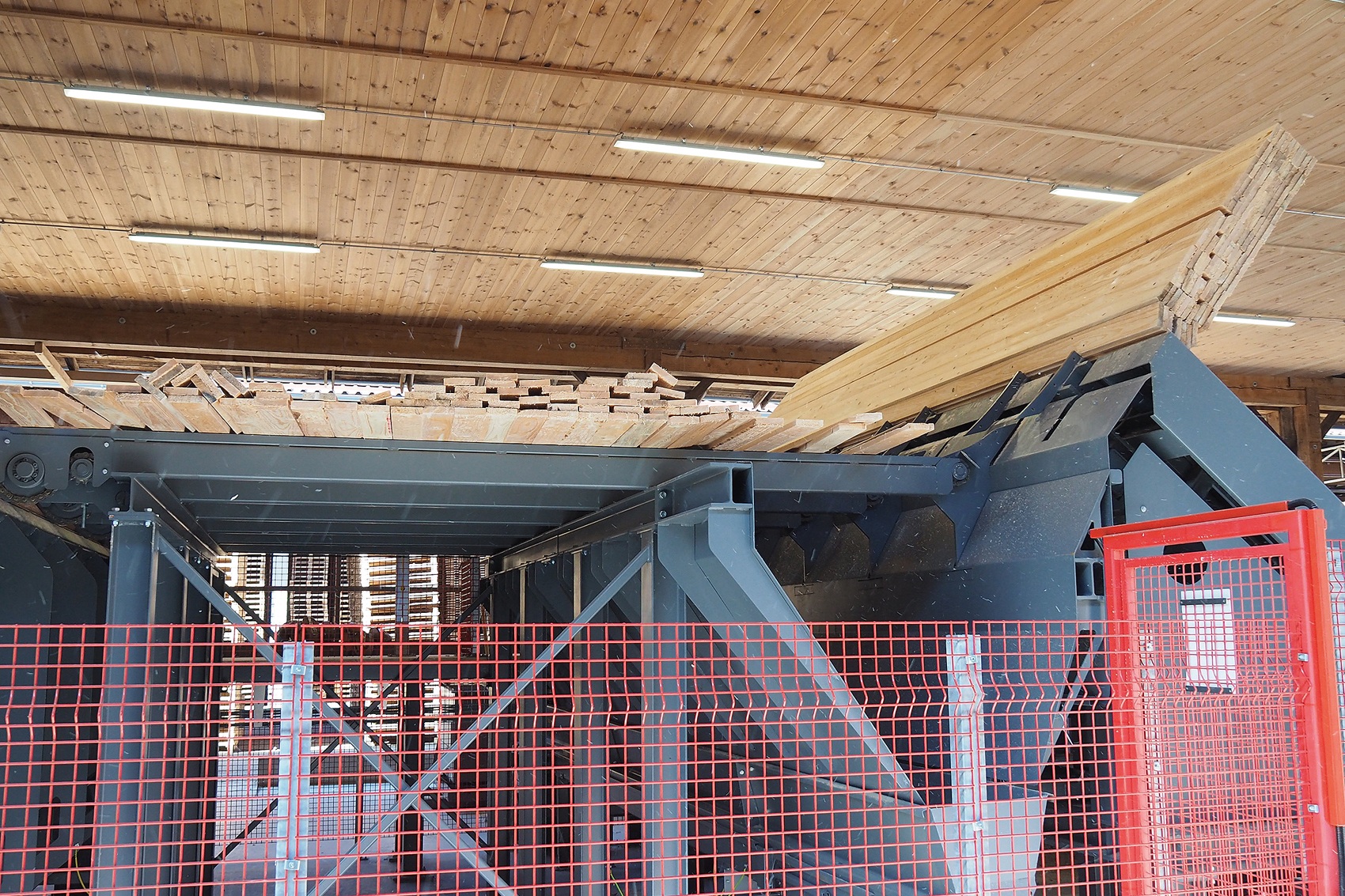
In an “orderly” fashion: Tilt destacking of the sawn timber packages, the stacking strips are disposed of automatically.
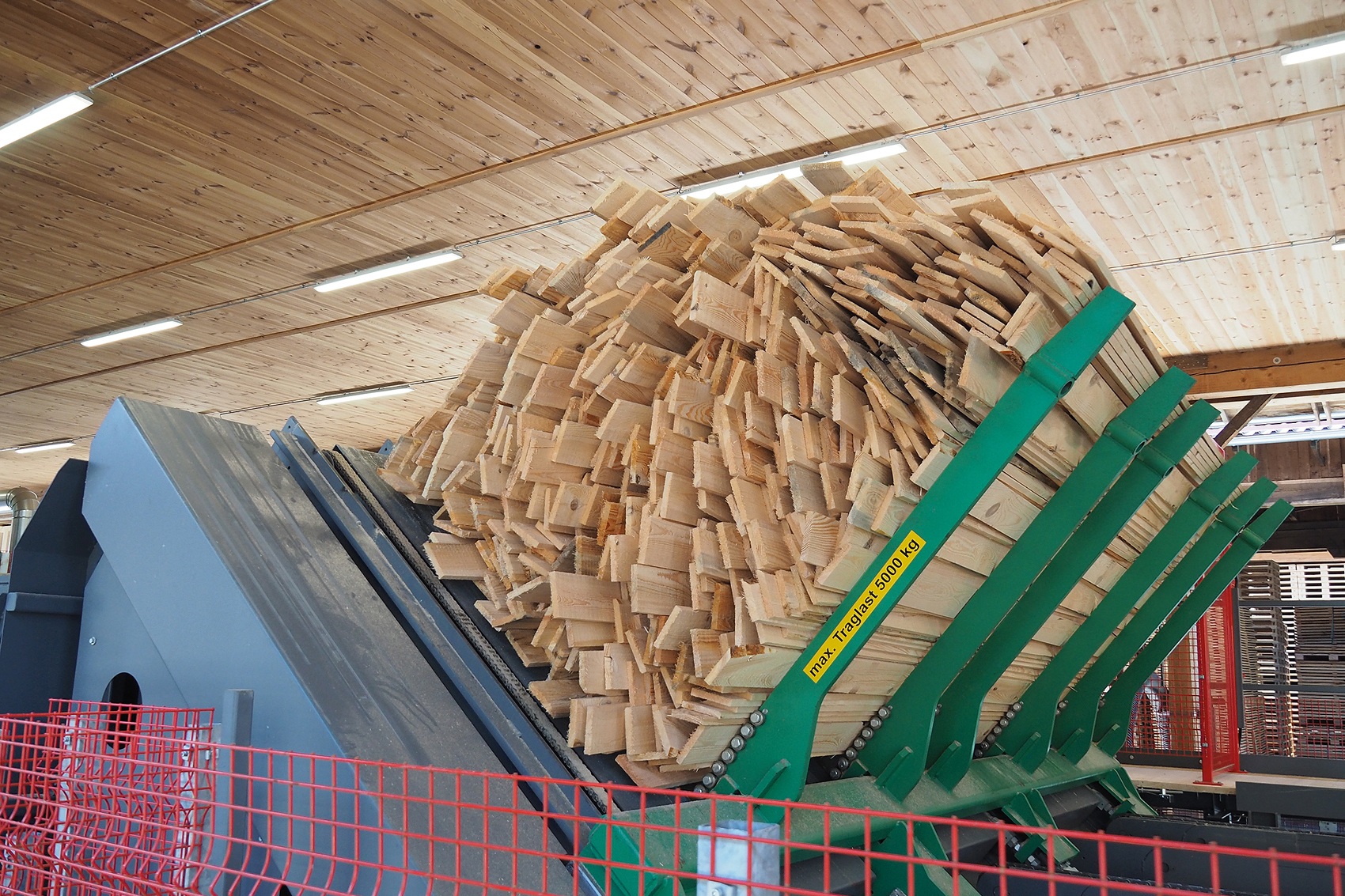
Since a large part comes to the new restacking plant in the form of bundles, Kallfass expanded the installation at the beginning of 2023.
Restacking wood packages or bundles
The Kallfass restacking system starts with a package chain conveyor or the downstream tilt destacking for wood packages and bundles. The stacking sticks fall automatically onto a conveyor belt and are collected. The boards—measuring up to 5 m long—first slide onto a buffer chain conveyor and then enter into the step feeder. “In these systems, both steps move so that the load is divided. This ensures a reduced energy consumption”, Link explains. The boards fall into the unscrambler’s trough, are subsequently right-aligned and transported to the accumulation chain conveyor. Here, an employee checks the timber and sorts out any unacceptable goods. This is followed by the layer-by-layer charging of the Kallfass multiple cross-cut saw. This saw is equipped with seven sawing units, six of which are completed automated and can be positioned as required. According to Kallfass, the shortest cutting length is approx. 760 mm. A waste conveyor is used to remove the scrap wood. Utilising placement forks, the board layers that were cut exactly to size are transferred to the stacker. This stacker has a unique feature: In order to facilitate further internal package manipulation, the boards are stacked on a pallet. To do this, the operator places the pallets in stacks onto a roller conveyor that has space for three wood packages. “First, the stacks are precisely aligned and then fed to the empty pallet magazine. Which feeds the hoisting unit with the pallets”, Link explains during our tour. Only when all the pallets are positioned can the hoisting unit move upward and begin the stacking process. The stacking system is equipped with board magazines. “Currently, Weiss Holzwerk only uses boards as intermediate sticks. In the future, sticks with a cross-section of 40 by 18 mm or 48 by 18 mm can also be used”, informs Link.
Martlmüller is enthusiastic about working as a team with Kallfass: “It was always a cooperation built on fairness”, confirms the Managing Director. “The employees, whom we involved in the project from the very beginning, are also happy with the new system.”
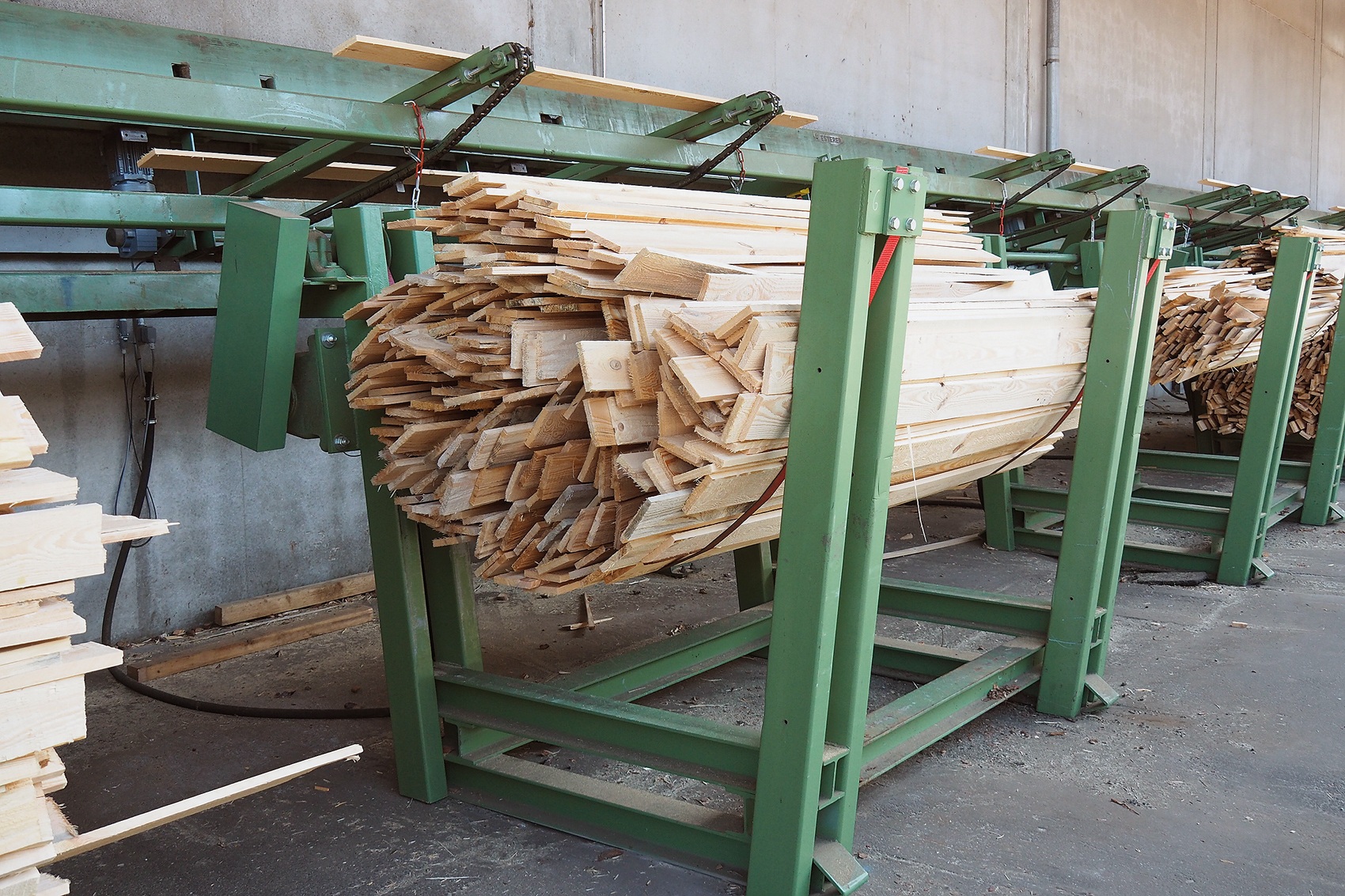
Due to space constraints, a longitudinal sorting system has been incorporated at Weiss Holzwerk, where the sawn timber is collected in bundles.
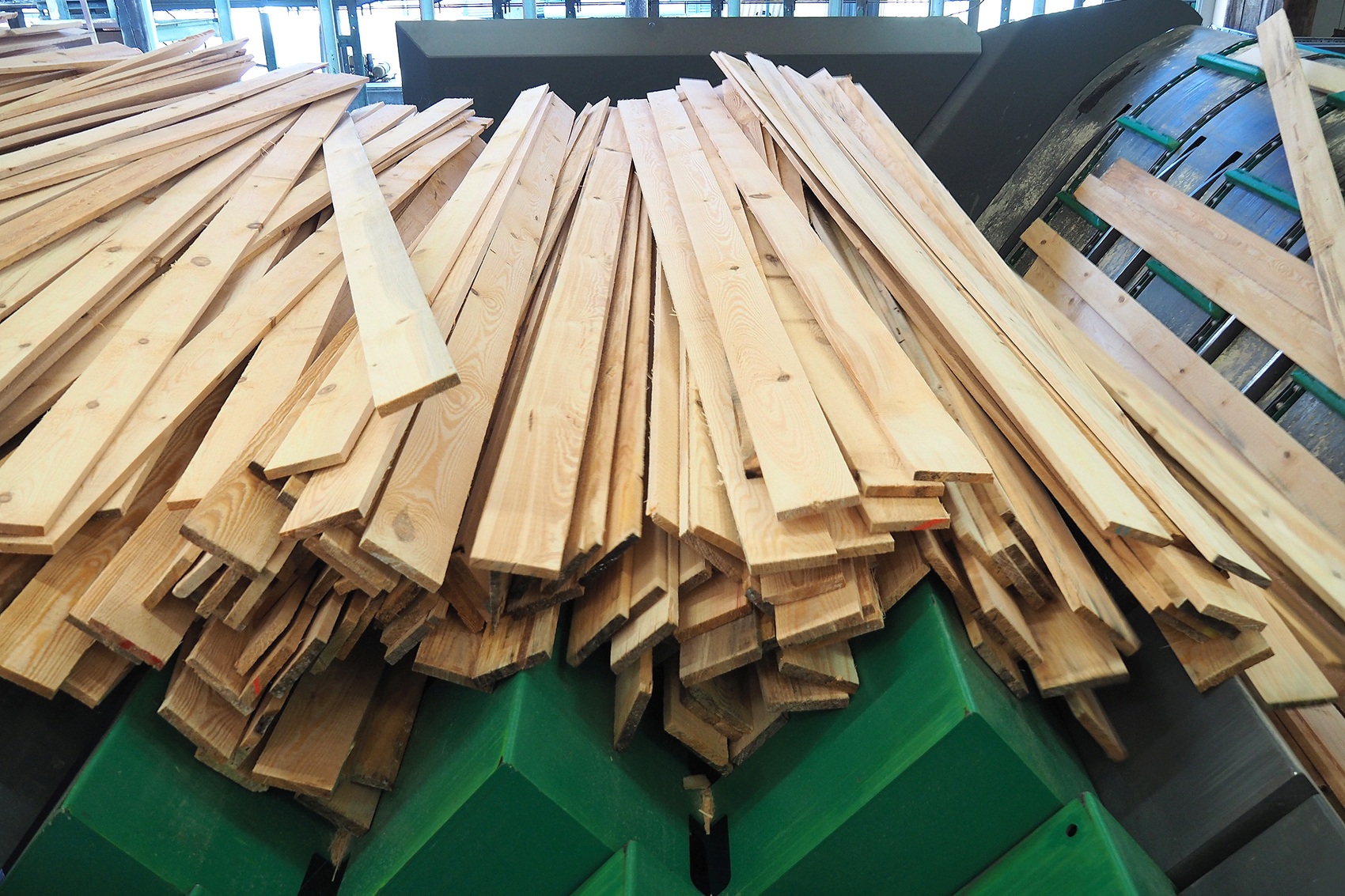
New additions include a buffer section and the step feeder, which feeds the bundles smoothly to the separator.
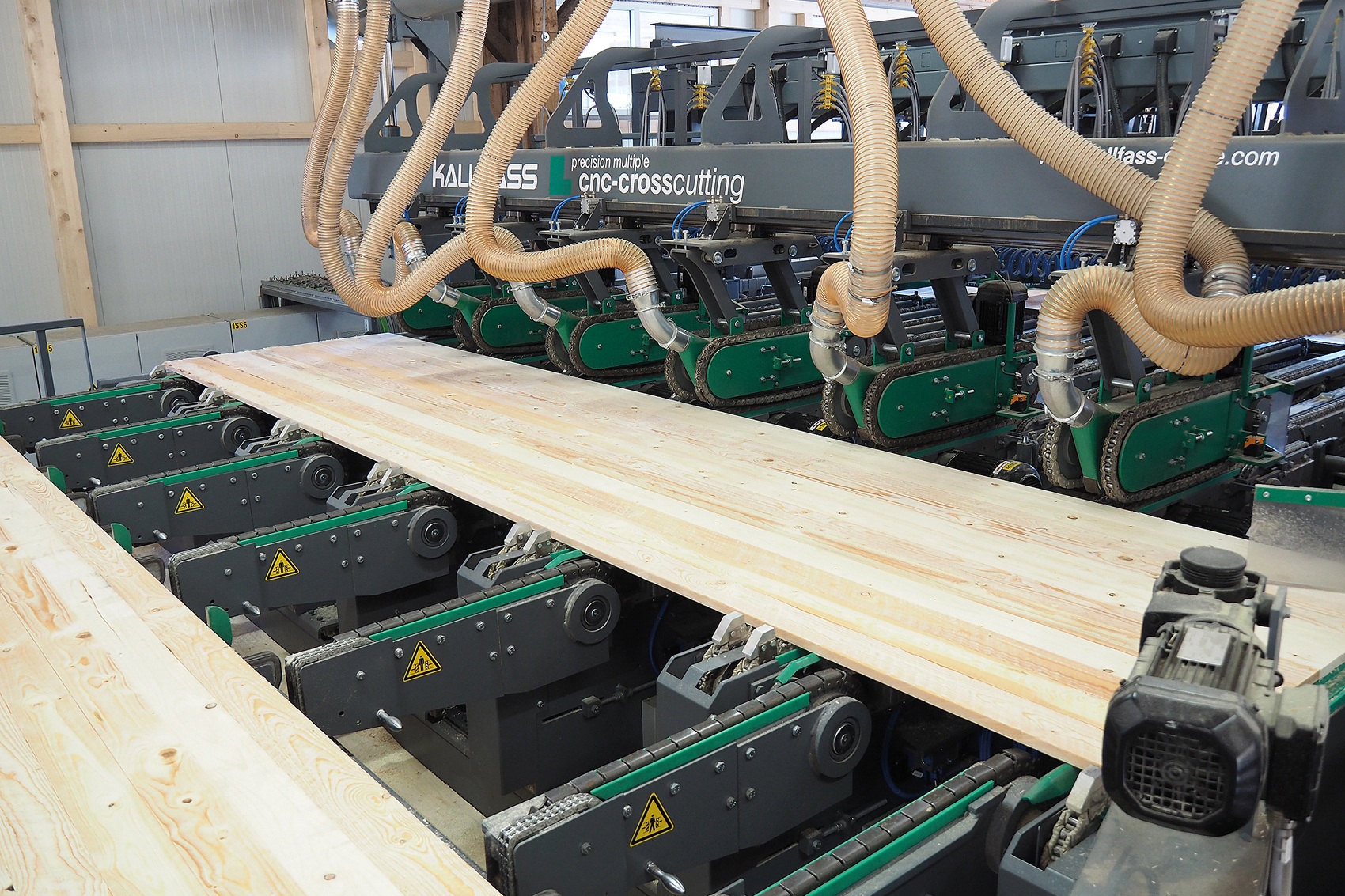
The multiple cross-cut saw at Weiss Holzwerk supplied by Kallfass is equipped with a total of seven saw units.
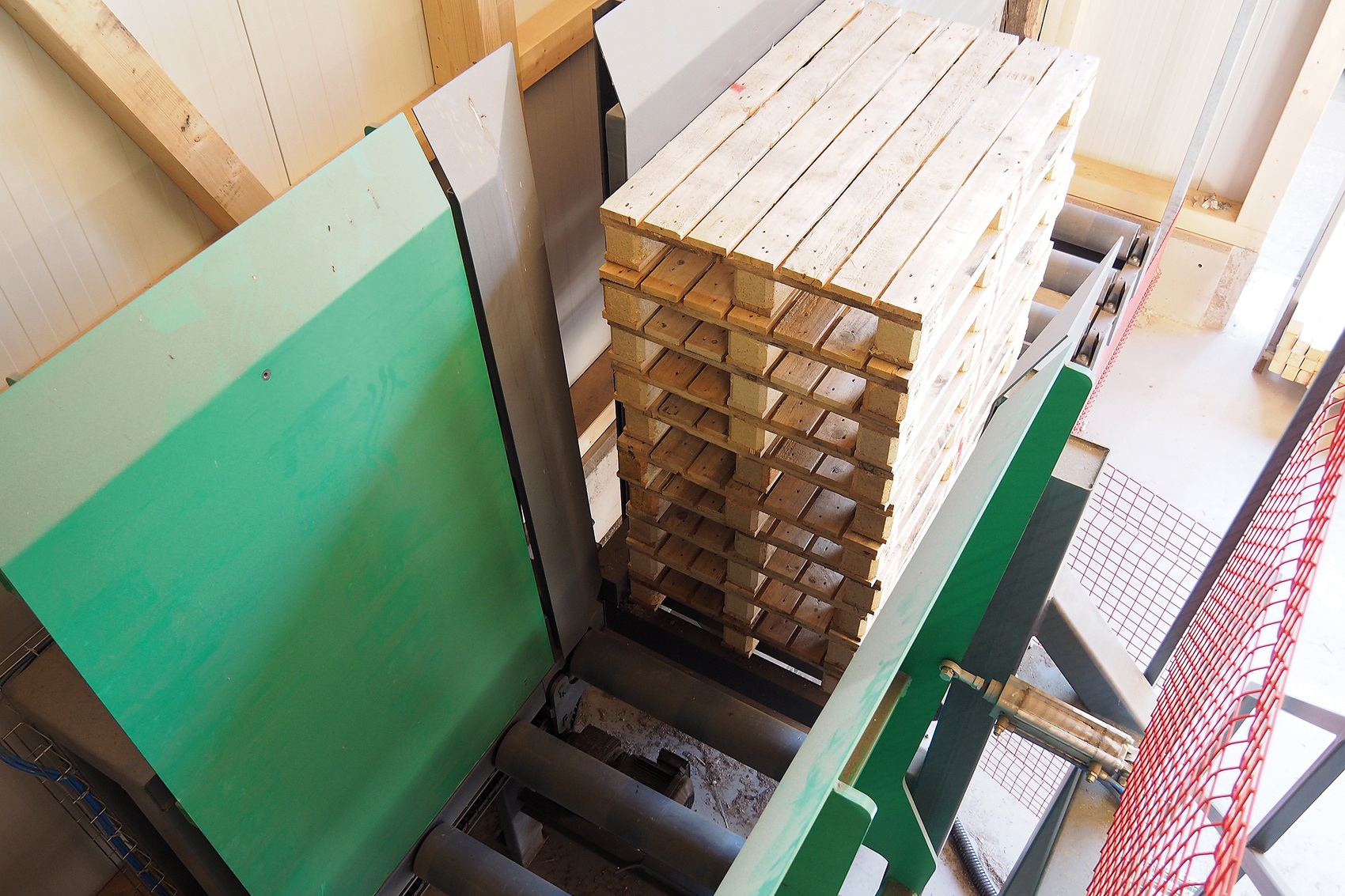
Pallet feed to the stacker: The wood packages are precisely aligned in order to avoid faults.
